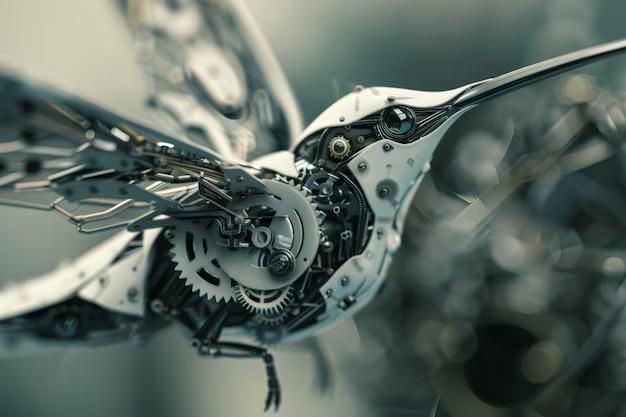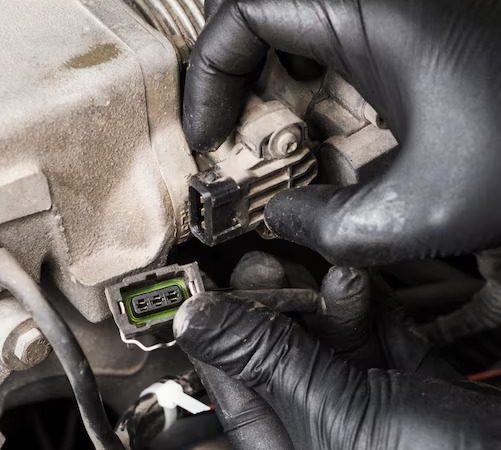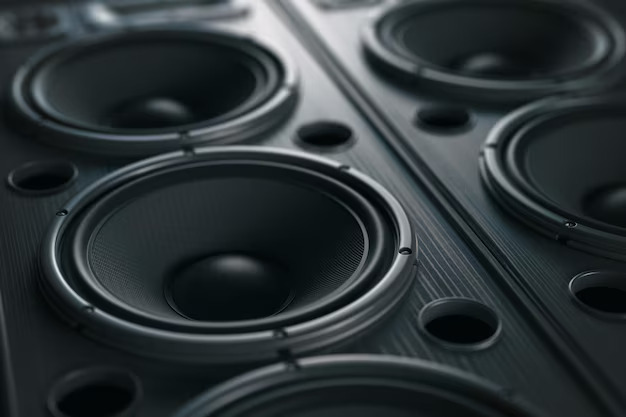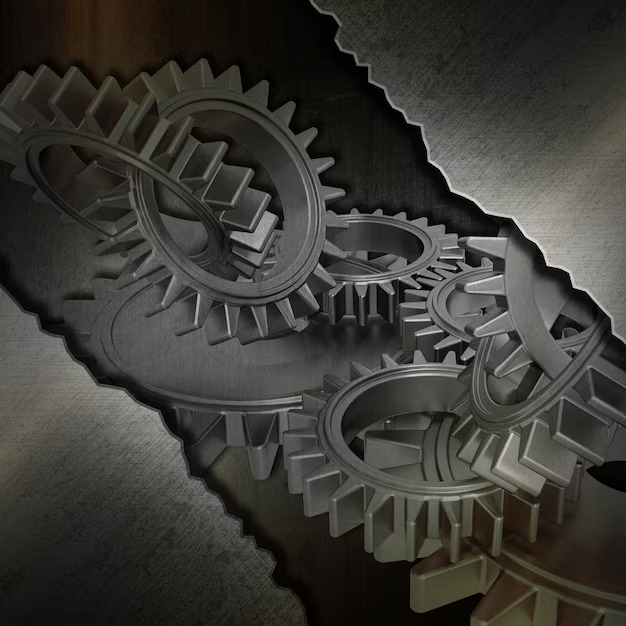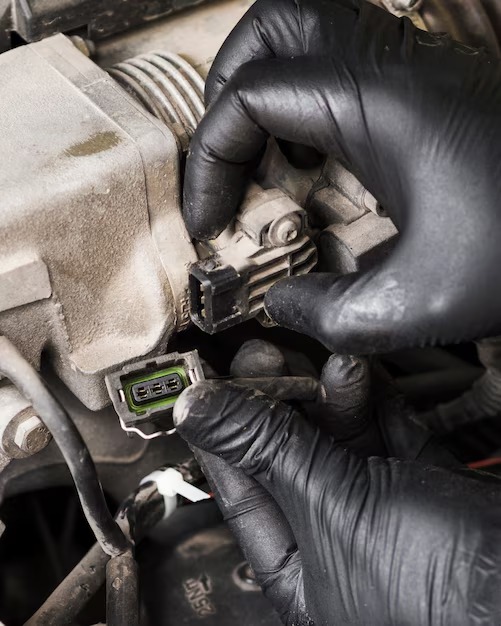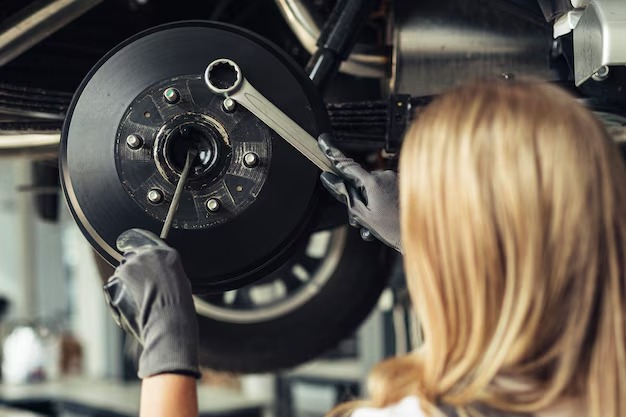Non-Interference Engines – interference engines – complete list valve
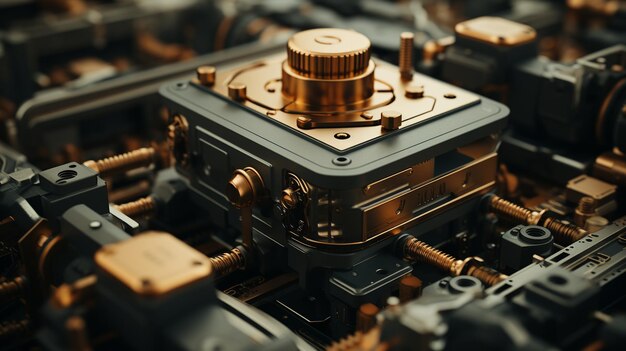
When it comes to the intricate world of automobiles, a crucial aspect that demands our attention is the concept of non-interference engines. Residing at the core of vehicular mechanics, these engines possess a distinctive characteristic that sets them apart from their counterparts. With a focus on preventing catastrophic consequences during potential mechanical failures, non-interference engines ensure a harmonious interaction of various components, granting drivers a peace of mind on the road.
Delving into the depths of non-interference engines necessitates an exploration of their fundamental workings and the intricate dance of their internal components. By understanding the ingenious design behind their creation, we can appreciate the delicate balance non-interference engines achieve, ensuring smooth and reliable performance. This fascinating notion prompts us to dig deeper into the realm of automotive engineering, uncovering the hidden secrets that lie within the heart of these mechanical marvels.
The significance of comprehending non-interference engines stretches far beyond pure curiosity. As car enthusiasts and responsible drivers, it is essential to familiarize ourselves with the inner workings of the vehicles we depend on daily. By gaining insights into the protective measures implemented in non-interference engines, we inherently equip ourselves with the knowledge necessary to make informed decisions when it comes to maintenance, repairs, and modifications. Empowered with this understanding, we can approach the immense world of automotive technology with confidence and ensure the longevity of our beloved vehicles.
The Basics of Non-Interference Engines valve
Exploring the fundamental concepts behind non-interference engines, this section focuses on the essential aspects of these specialized engine types. Without going into technical jargon, we will delve into the core ideas and principles that define non-interference engines, offering a basic understanding of their functionality and purpose.
Understanding Engine Operation
When it comes to non-interference engines, it is crucial to comprehend how they differ from their counterpart, interference engines. In non-interference engines, the piston and valves are designed in such a way that they never come into contact with each other during the engine’s operation. This fundamental distinction ensures a higher level of reliability and safety, as it mitigates the risk of potential damage to engine components. By maintaining a specific timing order, non-interference engines effectively prevent any interference between the piston and valves, allowing for smoother and more efficient engine performance.
Key Advantages of Non-Interference Engines
Non-interference engines offer several advantages over interference engines, making them an attractive choice for many vehicle owners. Firstly, their design reduces the likelihood of catastrophic engine failure. Since the piston and valves do not collide, there is a significantly lower chance of costly and extensive engine damage in the event of a timing belt or chain failure. Additionally, non-interference engines tend to be more forgiving when it comes to regular maintenance and servicing. As long as the timing order is correctly maintained, non-interference engines demonstrate a higher tolerance for minor timing issues without causing severe damage. Lastly, the absence of interference between components often results in quieter operation and smoother running engines, enhancing the overall driving experience for vehicle owners.
The Importance of Timing
In the realm of engine function and performance, timing plays a crucial role in the overall operation and durability of an automobile. The precision and synchronicity of various components working together can greatly impact the efficiency and longevity of an engine. With optimal timing, the combustion process occurs smoothly, resulting in optimal power output and fuel efficiency. However, any discrepancy or misalignment in timing can lead to detrimental consequences, potentially causing severe damage to the engine.
Timing refers to the specific coordination and synchronization of crucial engine components, such as the camshaft and crankshaft, as well as the opening and closing of valves. Each component must perform its function precisely at the correct moment, creating a harmonious interplay within the engine. Without correct timing, valves may open at the wrong time, causing interference with the piston’s movement or collisions between components. Such interference can lead to bent valves, damaged pistons, or even complete engine failure, thereby compromising the performance and reliability of the vehicle.
A well-timed engine, on the other hand, ensures that the intake and exhaust valves open and close at the appropriate moments in the engine’s cycle. This meticulous timing allows for the efficient intake of air-fuel mixture into the combustion chamber and the expulsion of exhaust gases. By optimizing the combustion process, a well-timed engine maximizes power output, enhances fuel efficiency, and reduces harmful emissions.
To maintain proper timing, regular maintenance and inspection are crucial. Over time, wear and tear can affect the components responsible for timing, leading to misalignment or malfunction. Regularly checking and adjusting the timing system can prevent potential complications and extend the lifespan of an engine. Additionally, it is essential to follow the manufacturer’s recommended timing specifications and guidelines when replacing timing-related parts, ensuring proper installation and synchronization.
In conclusion, timing holds significant importance in the functioning and longevity of an engine. The precise coordination of various components within the engine is essential for optimal performance. Understanding the importance of timing and taking appropriate measures to maintain it can prevent costly repairs and maximize the efficiency and durability of an automobile.
Benefits and Drawbacks of Non-Interference Engines
Exploring the Advantages and Disadvantages of Modern Engines
When discussing the features of contemporary engine technology, it is impossible to overlook the significant role that non-interference engines play in the automotive industry. These engines, well-known for their design that prevents contact between the pistons and valves, offer a range of advantages and drawbacks that are worth considering.
The benefits of non-interference engines are numerous and noteworthy.
First and foremost, the absence of contact between the pistons and valves eliminates the risk of engine damage in the event of a timing belt or chain failure. This crucial feature provides a sense of security to vehicle owners, as the potential for catastrophic engine failure is greatly reduced.
Additionally, non-interference engines often have a simpler design compared to their interference engine counterparts. This simplicity translates into lower manufacturing and maintenance costs, making non-interference engines more affordable for consumers in the long run.
Furthermore, the superior fuel efficiency achieved by non-interference engines is another noteworthy advantage. Without the interference caused by piston-valve contact, these engines are able to optimize combustion and achieve better mileage, resulting in cost savings at the pump.
However, it is important to acknowledge the drawbacks of non-interference engines as well.
One of the significant drawbacks is the limited power output compared to interference engines. As the design of non-interference engines prioritizes valve clearance over performance, these engines may not be suitable for high-performance vehicles or those requiring heavy towing capabilities.
Another concern is the potential for decreased horsepower at higher RPM ranges. The design limitations of non-interference engines may impose restrictions on the engine’s ability to generate power at high speeds, impacting the vehicle’s overall performance.
Lastly, it is worth noting that the absence of piston-valve contact in non-interference engines can also lead to reduced compression ratios. This reduction in compression may result in decreased torque output, affecting the engine’s ability to provide the necessary power for certain applications.
In conclusion, while non-interference engines provide valuable benefits such as enhanced reliability, affordability, and fuel efficiency, it is essential to consider their drawbacks, including limited power output and potential compromises in performance. By thoroughly understanding the advantages and disadvantages of non-interference engines, individuals can make informed decisions when it comes to choosing the right type of engine for their specific needs and requirements.
Maintenance and Repairs for Non-Interference Engines
Ensuring the longevity and optimal performance of your non-interference engine requires regular maintenance and prompt repairs. By adhering to a proactive approach, you can prevent potential damages, minimize the risk of costly repairs, and extend the lifespan of your vehicle’s engine.
Scheduled Maintenance
Regularly scheduled maintenance is crucial for non-interference engines. It involves periodic inspections, fluid changes, and component replacements to keep all parts in proper working condition. By following the manufacturer’s recommended maintenance schedule, you can address any potential issues before they escalate, ensuring the smooth operation of your engine.
Preventative Measures
Besides scheduled maintenance, implementing preventative measures can significantly contribute to the overall health of your non-interference engine. This includes regular oil changes, ensuring proper coolant levels, and maintaining the correct tension on the timing belt. Additionally, using high-quality fuel, replacing air filters regularly, and inspecting spark plugs can help optimize engine performance and reduce the likelihood of malfunctions.
| Repairs | Signs of Potential Issues |
|---|---|
| 1. Timing Belt Replacement | • Squealing or grinding noise coming from the engine |
| 2. Valve Adjustment | • Poor engine performance, including misfires or decreased power |
| 3. Ignition System Maintenance | • Difficulty starting the engine or frequent stalling |
| 4. Fuel System Repairs | • Decreased fuel efficiency or engine hesitation during acceleration |
When it comes to repairs, prompt attention to any signs of potential issues is essential. Ignoring warning signs can lead to more severe damage and higher repair costs. Some common signs that indicate the need for immediate repairs include unusual engine noises, decreased power, difficulty starting the engine, and decreased fuel efficiency.
In conclusion, regular maintenance and prompt repairs are key to keeping your non-interference engine running smoothly. By following the recommended maintenance schedule, implementing preventative measures, and addressing potential issues promptly, you can ensure the longevity and optimal performance of your vehicle’s engine.
Common Myths about Non-Interference Engines
There are several misconceptions about non-interference engines that can lead to confusion and misunderstandings. In this section, we will debunk these myths and provide a clearer understanding of how non-interference engines function.
Myth 1: Non-interference engines cannot suffer catastrophic damage
Contrary to popular belief, non-interference engines are not immune to severe damage. While it is true that a broken timing belt, for example, may not cause piston-to-valve interference, it can still lead to significant engine issues. This misconception arises from the fact that non-interference engines have a lower risk of catastrophic damage, but they are not invincible.
Myth 2: Non-interference engines do not require timing belt maintenance
Another common misconception is that non-interference engines do not require timing belt maintenance. Although the risk of piston-to-valve interference is reduced in non-interference engines, the timing belt still plays a crucial role in synchronizing the engine’s components. Regular timing belt inspections and replacements are necessary to prevent potential failures and ensure optimal engine performance.
Myth 3: Non-interference engines always provide better fuel efficiency
It is a misconception to assume that all non-interference engines offer superior fuel efficiency compared to interference engines. While non-interference engines may have certain design advantages, such as less friction and lighter components, the overall fuel efficiency depends on various factors, including engine size, technology, and driving conditions. It is not solely determined by the interference or non-interference nature of the engine.
Myth 4: Non-interference engines are less powerful
Some people mistakenly believe that non-interference engines are generally less powerful than interference engines. However, the power output of an engine is not determined by its interference characteristics but rather by factors such as the design, displacement, and efficiency. Both interference and non-interference engines can achieve impressive power levels depending on their specific configurations and intended applications.
- Conclusion:
These common misconceptions about non-interference engines often stem from a lack of comprehensive understanding. By debunking these myths, we can gain a more accurate perception of how non-interference engines operate and the precautions that need to be taken for their maintenance and performance optimization.
Is a Non-Interference Engine the Right Choice for Your Vehicle?
Considering the compatibility of an engine with your vehicle is of utmost importance when it comes to making an informed decision. While there are various types of engines available, one option to explore is the non-interference engine. Before delving into the specifics of this engine type, it is essential to evaluate whether it is the right fit for your vehicle’s needs.
When determining if a non-interference engine is suitable for your vehicle, it is crucial to consider factors such as performance requirements, maintenance preferences, and long-term durability. Different engines offer distinct advantages and disadvantages, making it essential to assess if the characteristics of a non-interference engine align with your expectations and usage.
If you prioritize enhanced performance and high-power output, a non-interference engine might not be the optimal choice for you. While these engines provide reliability and efficiency, they tend to offer lower horsepower compared to their interference engine counterparts. This consideration is particularly relevant for those seeking a vehicle with high-speed capabilities or heavy-duty usage.
However, if long-term dependability and lower maintenance costs are key factors for you, a non-interference engine can offer significant advantages. These engines are designed in a way that minimizes the likelihood of catastrophic engine damage in the event of a timing belt failure. The absence of physical contact between the valves and the pistons allows for greater peace of mind, reducing the potential for costly repairs.
Furthermore, if you prefer a hassle-free ownership experience with fewer complexities and lower overall maintenance requirements, a non-interference engine might be the right fit. With fewer moving parts and reduced risk of damage during timing belt failures, these engines generally require less frequent and less expensive maintenance compared to interference engines.
Ultimately, the decision of whether a non-interference engine is right for your vehicle depends on your specific priorities and requirements. Assessing factors such as performance expectations, maintenance preferences, and long-term operating costs can help guide you towards making an informed choice that best suits your needs.
Q&A: Non interference engines
What is the difference between an interference engine and a non-interference engine?
The difference between an interference engine and a non-interference engine lies in the clearance between the valves and pistons. In an interference engine, there is insufficient clearance, while in a non-interference engine, there is enough clearance to prevent contact.
What happens if the timing belt or chain breaks in an interference engine?
If the timing belt or chain breaks in an interference engine, the fully open valves and pistons can collide, potentially causing major internal engine damage.
How can you determine whether your car engine is an interference or non-interference engine?
You can determine whether your car engine is an interference or non-interference engine by checking the engine specifications or consulting a mechanic familiar with your vehicle’s design.
What are some risks associated with interference engine designs?
Interference engine designs pose the risk of major internal engine damage if the timing belt or chain breaks and the valves and pistons come into contact.
How do mechanics check for bent valves in an interference engine?
Mechanics check for bent valves in an interference engine by performing a leak-down test or by checking the valve gaps to determine if any valves are out of specification.
What are some differences in engine design between interference and non-interference engines?
In interference engine designs, the valves and pistons are closer together, while in non-interference engines, there is more clearance between them to prevent contact.
What happens if a timing belt breaks in a non-interference engine?
If a timing belt breaks in a non-interference engine, the engine will simply stop running, but there is less risk of internal engine damage compared to an interference engine.
What are some signs that point to a bent valve in an interference engine?
Signs that point to a bent valve in an interference engine include engine misfires, loss of power, and unusual noises coming from the engine.
What is the purpose of a tensioner in an interference engine?
The tensioner in an interference engine maintains proper tension on the timing belt or chain to ensure precise valve timing and prevent premature wear.
What steps are involved in replacing a timing belt or chain in an interference engine?
Replacing a timing belt or chain in an interference engine involves removing the old belt or chain, inspecting and replacing any worn components, and carefully installing the new belt or chain to ensure proper valve timing.
What defines an interference engine?
An interference engine is one where there is insufficient clearance between the valves and pistons, posing a risk of internal damage if timing components fail.
How can you determine if your engine is an interference or non-interference engine?
The following list will provide information on whether your car engine is an interference or non-interference engine, based on its design specifications.
What are some characteristics of interference engines?
Interference engines have a design that allows the valves and pistons to occupy the same space in the cylinder head, increasing the risk of internal damage if timing components fail.
What happens if a timing belt breaks on an interference engine while the engine is running?
If a timing belt breaks on an interference engine while the engine is running, the fully open valves can hit the pistons, potentially causing severe internal damage.
How do mechanics check for bent valves in an interference engine?
Mechanics check for bent valves in an interference engine by performing a leak-down test or by inspecting the valves for signs of damage.
What is the consequence of a broken belt in a non-interference engine?
If a timing belt breaks in a non-interference engine, the engine will simply stop running, with less risk of internal damage compared to an interference engine.
Why do interference engines risk major internal damage when timing components fail?
Interference engines risk major internal damage because the lack of clearance between valves and pistons means they can collide if timing components fail.
What are some common types of engines, in terms of interference vs. non-interference design?
Common types of engines include both interference and non-interference designs, with interference engines posing a higher risk of internal damage.
What is the role of timing components in an interference engine?
Timing components in an interference engine must be properly maintained to prevent the risk of internal damage if the timing belt or chain fails.
How is engine design different between interference and non-interference engines?
Interference engine design allows engine designers to maximize performance, while non-interference engines prioritize safety by minimizing the risk of internal damage.

